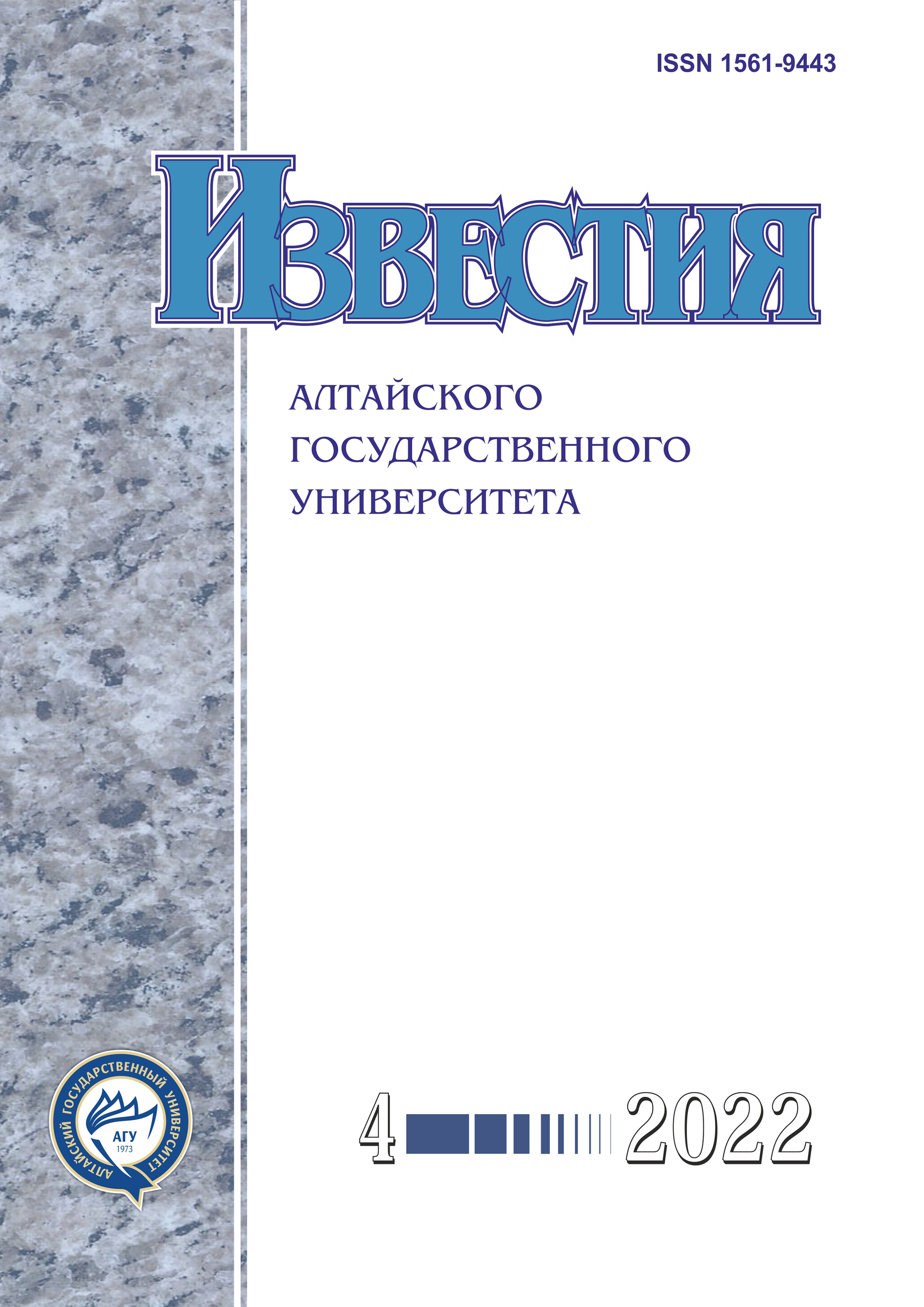Microstructure and Mechanical Properties of Brass L63 after Friction Mixing Treatment
УДК 669:621.7
Abstract
The processing of materials by the friction mixing method is one of the advanced technologies for hardening and modifying the surface of metals and alloys in modern mechanical engineering. This technology has been widely used in the processing of aluminum, titanium and, in particular, copper alloys. Recent studies in the field of frictional mixing processing (FMA) of zinc-based copper alloys show that, depending on the technological parameters (speed of rotation and movement of the tool, load) and processing modes, a change in the microstructure and mechanical properties of the material is observed. However, the effect of a multipass FPO on the L63 brass alloy has not actually been studied. Therefore, in this work, we studied the effect of a four-pass FPO on the structure and mechanical properties of the L63 copper alloy. According to the analysis, it was revealed that the microstructure in the mixing zone is a region of equiaxed recrystallized grains with an average grain size of about 1.5-2 μm. Due to severe plastic deformations, a fine-grained structure is formed in the material, which causes the increase of microhardness in the mixing zone. The tensile strength of the material after one pass by the tool increases from 314 to 487 MPa, and after the fourth pass up to 497 MPa, no softening of the metal occurs. No visible defects were found in the cross-section of the material due to the optimally selected processing modes.
Downloads
Metrics
References
Kim H.S., Kim W.Y., Song K.H. Effect of post-heattreatment in ECAP processed Cu–40% Zn brass // Journal of Alloys and Compounds. 2012. Vol. 536.
Li S. et al. Development of precipitation strengthened brass with Ti and Sn alloying elements additives by using water atomized powder via powder metallurgy route // Materials Chemistry and Physics. 2012. Vol. 135. № 2-3.
Meran C. The joint properties of brass plates by friction stir welding // Materials & design. 2006. Vol. 27. № 9.
Heidarzadeh A., Saeid T., Klemm V. Microstructure, texture, and mechanical properties of friction stir welded commercial brass alloy [Electronic version]. Materials Characterization. 2016. № 119.
Mishra R.S., Ma Z.Y. Friction stir welding and processing // Materials science and engineering: R: reports. 2005. Vol. 50. № 1-2.
Mironov S. Development of grain structure during friction-stir welding of Cu-30Zn brass [Electronic version]. Philosophical Magazine. 2014. № 94.
Wang D. et al. Friction stir welding of discontinuously reinforced aluminum matrix composites: a review // Acta Me-tallurgica Sinica (English Letters). 2014. Vol. 27. № 5.
Barlas Z., Uzun H. Micro structure and mechanical properties of friction stir butt welded dissimilar pure copper/ brass alloy plates //International Journal of Materials Research. 2010. Т 101. № 6.
Heidarzadeh A., Saeid T. A comparative study of microstructure and mechanical properties between friction stir welded single and double phase brass alloys // Materials Science and Engineering: A. 2016. Т. 649.
Emami S., Saeid T. Effects of welding and rotational speeds on the microstructure and hardness of friction stir welded single-phase brass // Acta Metallurgica Sinica (English Letters). 2015. Т 28. № 6.
Copyright (c) 2022 Александр Владимирович Судариков , Андрей Валерьевич Чумаевский , Андрей Максимович Черемнов , Анна Петровна Зыкова , Евгений Александрович Колубаев

This work is licensed under a Creative Commons Attribution 4.0 International License.
Izvestiya of Altai State University is a golden publisher, as we allow self-archiving, but most importantly we are fully transparent about your rights.
Authors may present and discuss their findings ahead of publication: at biological or scientific conferences, on preprint servers, in public databases, and in blogs, wikis, tweets, and other informal communication channels.
Izvestiya of Altai State University allows authors to deposit manuscripts (currently under review or those for intended submission to Izvestiya of Altai State University) in non-commercial, pre-print servers such as ArXiv.
Authors who publish with this journal agree to the following terms:
- Authors retain copyright and grant the journal right of first publication with the work simultaneously licensed under a Creative Commons Attribution License (CC BY 4.0) that allows others to share the work with an acknowledgement of the work's authorship and initial publication in this journal.
- Authors are able to enter into separate, additional contractual arrangements for the non-exclusive distribution of the journal's published version of the work (e.g., post it to an institutional repository or publish it in a book), with an acknowledgement of its initial publication in this journal.
- Authors are permitted and encouraged to post their work online (e.g., in institutional repositories or on their website) prior to and during the submission process, as it can lead to productive exchanges, as well as earlier and greater citation of published work (See The Effect of Open Access).








